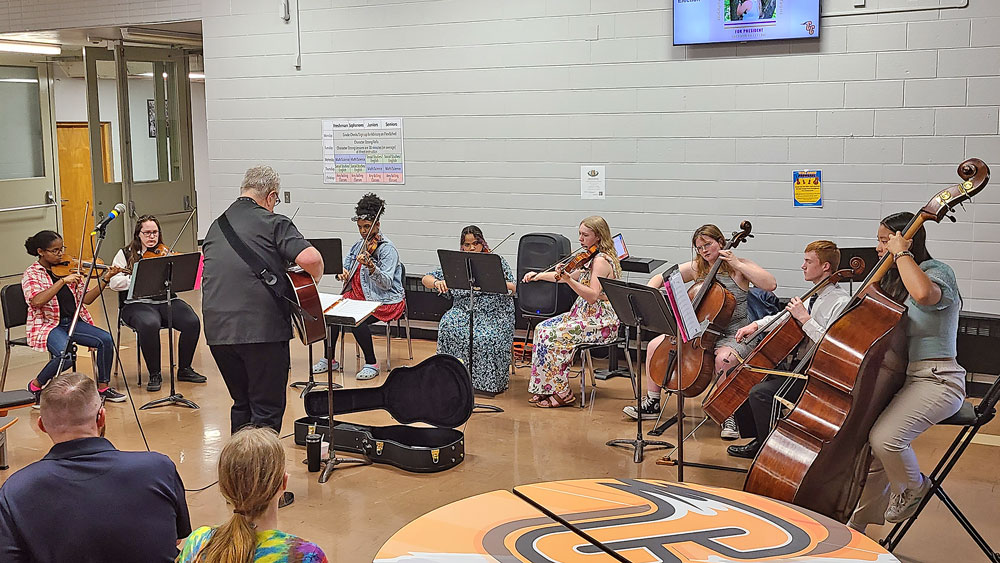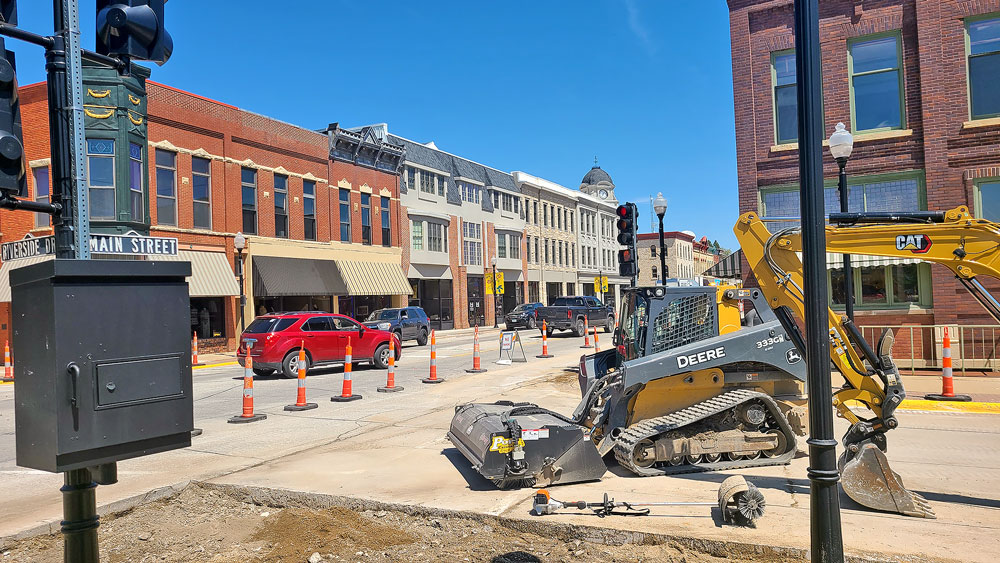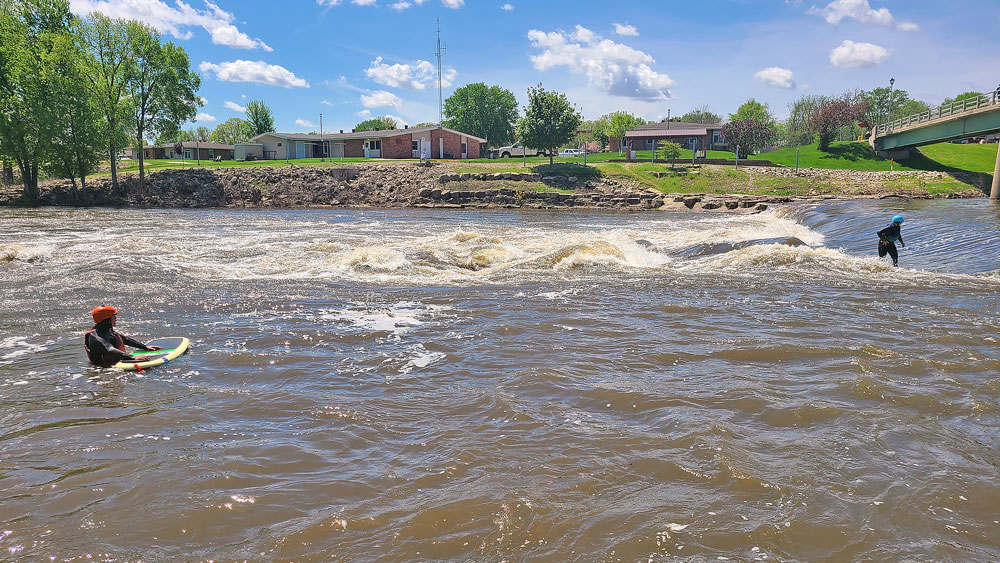Wind power project concerns voiced at meeting in Rockford

By Bob Steenson, bsteenson@charlescitypress.com
There were two messages that came out of a meeting held at the Rockford High School gym Sunday evening regarding wind power projects.
One message, from a Worth County zoning commissioner, was that counties need to be proactive about setting up rules for wind turbines and that people who are approached for easements for turbines need to get competent legal representation.
And the other message was from several people who said they are opposed to wind turbines and they believe the negatives outweigh any positives.

The meeting was prompted by plans by two companies, Invenergy and NextEra, to build wind energy projects in the western part of Floyd County. Invenergy is proposing up to 70 turbines south of Rudd to Marble Rock and NextEra plans up to 100 turbines north of Rudd and Nora Springs.
The Floyd County Board of Supervisors have heard from representatives of both projects, and Chair Mark Kuhn has questioned whether the county needs to update its zoning ordinance regarding wind projects.
Two women, who live in rural Worth County east of Northwood, said at the meeting Sunday evening they don’t have wind turbines on their property, but they are close enough to turbines on neighboring properties to cause what they said are continual problems.
Shelly Venechuk said her six-acre acreage is surrounded by five turbines, which are “extremely loud.”
The closest is about a quarter-mile away, and the noise makes it difficult to enjoy being outside and “you can’t sleep at night with the windows open.”
“I’m not saying they don’t have their place,” Venechuk said, “but you need to take into consideration the acreages that don’t have a choice.”
Ann Low had a similar story of never being contacted about the potential for turbines because they aren’t on her property, but she said the impact on her has been extreme.
“I’ve been sick ever since the turbines were put in,” she said, describing what she says is pressure she feels in her head and neck from infrasound – sound waves below the the usual limits of human hearing – that prevents her from sleeping unless she goes into her basement.
“Think long and hard before you sign on the dotted line, because it will change your life forever,” Low said.
Jeff Gorball, a 23-year resident of Worth County who said he has been involved in Worth County zoning since 2008 and has been chair of the zoning commission since 2021, spent about an hour going through the history of the Worth County Zoning Commission and the Worth County Board of Supervisors in establishing a commercial wind energy conversions systems (CWECS) ordinance.
Gorball said Invenergy began designing a wind farm in 2018 in an eastern part of Worth County that didn’t have any zoning laws, and turbines began being installed in 2020.
In the spring of 2021, when some people were bringing up concerns with the projects, the Worth County Board of Supervisors began discussing a wind farm moratorium to give the Zoning Commission and the supervisors time to work on a ordinance regulating wind projects, and countywide zoning in general.
A moratorium was approved by the Worth County supervisors in April 2021.
In May 2022, Invenergy affiliate Worthwhile Wind LLC filed suit in Worth County District Court, saying it had spent “three years and millions of dollars on a wind energy project,” and asking the court to stop Worth County from “from arbitrarily, improperly and unfairly changing the rules in the middle of the project,” and of passing an ordinance that was aimed specifically at stopping the project.
Later that month, the Worth County supervisors approved a countywide zoning ordinance and in June 2022 they approved a specific wind power ordinance and canceled the moratorium.
A non-jury trial on the wind power project’s lawsuit asking the court to rule it had a vested interest in continuing its project has been delayed twice and is currently scheduled to begin Oct. 25 in Worth County District Court.
Gorball said most zoning ordinances or even wind power ordinances were written 10 or 20 years ago, and the technology has changed since then, including much higher and larger wind turbines being used.
He said the 30-plus page Worth County wind energy ordinance “doesn’t look like the majority of wind ordinances across the state,” but, “I would submit that ours is merely adequate to the situation we have today.”
Gorball said there are answers to most of the concerns, but most of the solutions are more expensive than not doing them, and the companies won’t do it unless an ordinance requires it.
Most of all, he said, persons who are considering signing an easement to allow a wind energy project on their property should be represented by an attorney who is familiar with this subject, and people should remember that the only thing that counts is what’s in the easement agreement.
“What they say doesn’t matter,” he said. “What matters is what’s in the signed agreement.”
Julie Kuntz, from Grafton, who helped organize the meeting Sunday and who has been a steady opponent of wind projects, spoke last, and said she does not believe wind energy “has a place on the grid.”
She talked about what she said are health concerns, turbines affecting doppler radar needed to track storms, causing property near turbines to lose value and other allegations.
Kuntz invited people to sign petitions on a table at the back of the gym asking the Floyd County supervisors to update the current wind ordinance “to increase setbacks from dwellings, add aviation detection lighting, add bald eagle setbacks and shut-off detection systems and to add tower height limits.”









Social Share